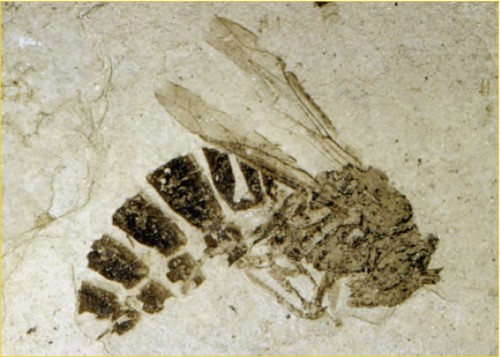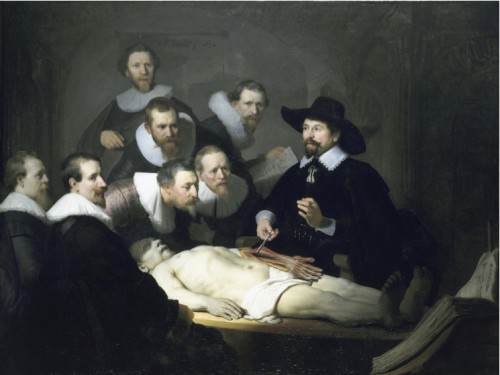 Threads
Threads
by Jill Magi
Futurepoem, 2007
144 pages / $15 Buy from SPD or Amazon
I
Ghosts.
The ghost of the homeland (“isamaa” – fatherland).
The ghost of family history.
The shadow of the self.
Phantom limb:
“the sensation that an amputated or missing limb (even an organ, like the appendix) is still attached to the body and is moving appropriately with other body parts. Approximately 60-80% of individuals with an amputation experience phantom sensations in their amputated limb, and the majority of the sensations are painful. […] The missing limb often feels shorter and may feel as if it is in a distorted and painful position.” 1

Fig. 1: Illustration of ‘paralyzed’ phantom limb sensations, Phantom Pain by Rebecca Brightwell via AgrAbility in Georgia (http://agrabilityinga.com/phantompain.html)
“most treatments for phantom limb pain […] are ineffective and fail to consider the mechanisms that underline production of the pain.” – Herta Flor, Dept. of Clinical Neuroscience, University of Heidelberg.2
The phantom manuscript.
This is the tale of Magi’s father, told in prose images torn & stitched. Letters, maps: they hint at this other text, this fuller text which serves as the source for the book, but which we never fully see. The father text. The sensation of the story.
II
Father text/fossil text.
The tearing & restitching of the father’s map reconstructed by the daughter as an attempt toward understanding (image on pg 10 etc). Revisions are made; bloodline edits (edits made as we evolve…edits between generation & generation), Magi the writer as both the experiencer & the engineer of her history:
“Engineer precedes father precedes master precedes oneself, even independence[…]” (pg 16).
But also: an overlap of multiple identity. Layering of who you are under who you came from.
The father on the daughter. His image superimposed over her own. This is the true meaning of Americanism: the overlap of heritage (ethnic/local) with “american” identity.
“The meaning of natural.” (pg. 96)
The meaning of being natural. How does the process of editing ones history make history? How does memory spontaneously create itself?
Immigrating/becoming/erasing/applying/adopting/taking/earning/transforming.
American assimilation into homogeneity.
Like fossils (here: memory) made on a rock without the creature’s conscious knowing.

Fig. 2: Fossil Wasp from Eocene Lake Beds, Florissant Fossil Beds National Monument, via the Geological Society of America (www.geosociety.org/graphics/gv/pikespeak/03fossilwasp.htm) photo by Bud Wobus
(did this wasp know it was being immortalized? )
When that animal lays dying, pressing onto the stone & bonding its bones to the rock it doesn’t know it’s being made. Like the father marking his child it cannot sense its new status as eternal experience. Its memory is left behind on the stone & it cannot feel that transfer occurring. The memory of the father is left in the daughter like a secret, blurring the space between memory & humanity.
See page 4:
“Amber return, once fluid, hardened breath-trap.
Sap turns to stone as these sounds conjure whose memories?”
III
Overlap/layering/erasing/remaking
“in art one must kill his father.”
-Picasso.
The function of history is to be remade.
The father is rewritten as daughter. (The father is “killed” to become the daughter, her search for him in the present is past tense).
“arranging thinking into new shapes.” (pg 21). Curating the story as an act of ownership, but wondering; are we destined to become our histories? How can these histories be reassembled from their disparate parts?
Here enters the sewing. The stitching together. But why sewing?
-domestic/feminine
-constructing
-attaching
-combining divergent elements
-making things fit
The burden of reconnecting falls to the daughter. She must fashion the seams to hold her histories together. Later generations must do the work to make their stories fit.
IV
Sutures. Sewing. Stitching together. Repairing.

Fig. 3: Simple Continuous Suture from Surgery for Nurses by James Kemble (1949) via The Serendipity Project (http://serendipityproject.wordpress.com/)
Suture literally means “join”
from Latin sutura meaning “a seam, a sewing together” 3
“a torn leaf is repaired by marrying the overlapping edges and print together with a needle. Position it under the missing part. Some loss is inevitable.” (pg 8).
The delicate neurosurgery of recording memory.
“Reflect that there are three statements of force concerning the thread.
A pull or tension changed.
A relation between the tensions of the two sides.
A force to feel, of generative tensions—”
(pg 50).
The thread weaving through the pages… binding the book itself as well as its contents & readers.

Fig. 4: The Anatomy Lesson of Dr. Nicolaes Tulp, oil on canvas by Rembrandt van Rijn 1632. Courtesy of Mauritshuis, The Hague.
Rembrandt’s The Anatomy Lesson. See the sinews connecting the muscle to the distorted arm? This is what the “threads” are. The sinews. The connections. The lines of tissue zig-zagging back through the generations. Some loss of meaning is inevitable in tracing their chronicles. Trace the threads on the images (pg 5,10, 13, 17 etc…) the sinews of memory. Of history. Of selfstory. The tracing of the muscle & the tracing of the threads are the same.
(selfstory: like autobiography or memoir but crafted. sculpted from the facts & not strictly memory. made from the self & from understanding/exploring what fashioned the self).
V
Books.
This image is repeated. Writing the story. Making the story. The book is narrative, history, the personal/cultural story. The narrator is making the book therefore making the story.
But eventually the book breaks down:
“eventually the sewing breaks down and the binding collapses”. (pg 74).
History combines with the separate world. A kind of composting where the individual story is devoured by the larger consciousness.
The composting of memory.
or
Osmosis.
VI
Intuition vs. education (solid knowledge):
A rejection of the solid knowledge (i.e. what is known factually, or specifically. Not memory).
Putting ones faith in the accuracy of the felt map over the physical map.
“There is no past tense in the grammar of telling
In Estonian there is no then or there, it is only here.” (pg 72).
The multiplicity of family/ethnic/cultural history & identity. The felt history overlapping/stitching over the modern human (the narrator). But all things happen simultaneously, nothing happened before or in another place. The story is during.
Think: Quantum multiverse theory: “reality as a many-branched tree, wherein every possible quantum outcome is realized.” 4 Everything happens at once.
VII
What does this mean?
Personal history unfolds, is revealed, is crafted, & hand made in Threads. It is sculpted from memory & fact. It is torn & repaired. It is an old quilt your grandmother made… intricate & interconnected. In pieces & simultaneously whole. It is felt though it is invisible. History as a phantom limb. The idea of being from: that invisible place. The search into sourceness. Going on an expedition up river until you reach the snowy peak the water comes from.
Also: assimilation, erasure, survival. The american quest for standardization. The past must be uncovered like a fossil because it has been buried so many times. Nearly lost in its hiding places. The bones of the dinosaur are only revealed after you’ve split the rock in two.
I wonder though, is this whole project actually working against a singular idea presented on page 36:
“refusal to demonstrate a remembering.”
***
Notes:
1 Wikipedia entry on Phantom Limb, http://en.wikipedia.org/wiki/Phantom_limb
2 Phantom Limb Pain: A Case of Maladaptive CNS Plasticity? by Herta Flor, Lone Nikolajsen, and Troels Staehelin Jensen, via Nature Reviews Neuroscience vol 7, November 2006. http://krieger.jhu.edu/sebin/s/u/Flor_et_al_2006.pdf
3 Etymology via Douglas Harper, The Online Etymology Dictionary: http://www.etymonline.com/index.php?allowed_in_frame=0&search=suture&searchmode=none
4 David Deutsch via Wikipedia entry on Many-World interpretation of the quantum multiverse theory: http://en.wikipedia.org/wiki/Many-worlds_interpretation
***
Natalie Raymond is a poet, writer, artist, & gemini living in Brooklyn. She’s currently working on her MFA at Goddard College. Her work has previously appeared or is forthcoming in Poetry for the Masses, 491 Magazine, & Whole Beast Rag, among other places. She is a recent Pushcart Prize nominee, a feline enthusiast, & her favourite colour is pink. More info on current projects can be found at: natalieraymond.com
Tags: Jill Magi, Natalie Raymond, Threads

tinyurl.com/kk6tldj
tinyurl.com/kk6tldj